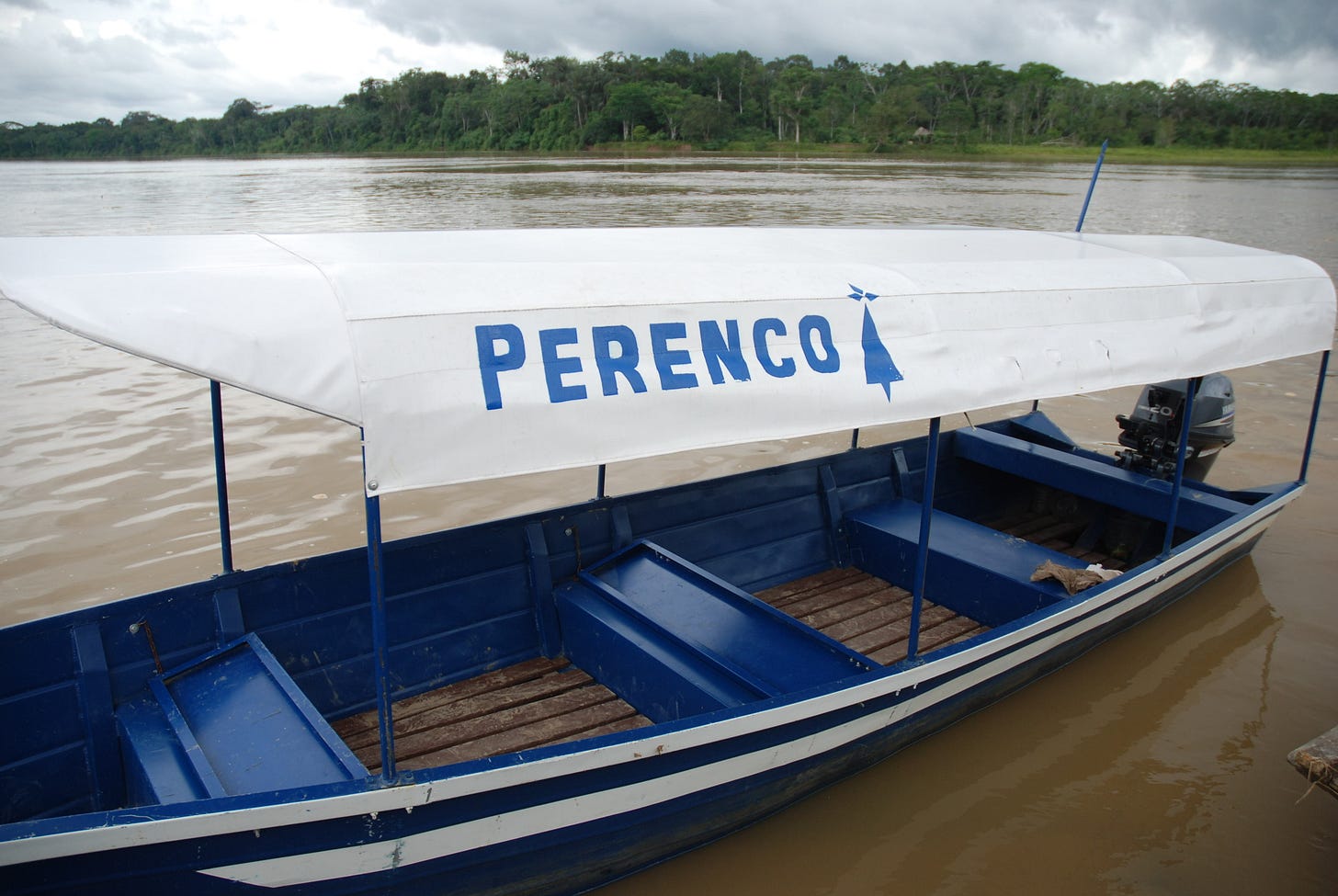New indigenous reserve slated for the Amazon as UK/France-based oil firm sues
Peru inches ever closer to creating a new reserve for indigenous peoples living in "isolation"
At the GTE Pro class 24 hour race at Le Mans this year a black Ferrari came steaming round a bend and hit a yellow Corvette, sending the latter into the barrier and out-of-control, and ending Corvette Racing’s victory dreams. The day before that race began, some 10,000 kilometres away, the Superior Court of Justice in Lima in Peru accepted a legal injunction filed by a UK- and France-headquartered oil company, Perenco, about one of the remotest parts of the Amazon rainforest. What’s the unlikely connection?
Answer: Francois Perrodo, the man behind the errant Ferrari’s wheel at Le Mans who, when not pratting about driving in circles as fast as he can, serves as Perenco’s chairman. As the holder of two huge concessions stretching for some 450,000 acres, that company is embroiled in arguably one of the most controversial - although comparatively under-the-radar - extractivist projects in the Peruvian Amazon.
The reason Perenco’s operations are so controversial is because, as I’ve reported numerous times in the past, they are right in an area reportedly inhabited by indigenous people living in “isolation”, who have little-to-no interaction with anyone else and could be decimated by contact. For 19 years Peruvian indigenous federations have been urging the government to establish an off-limits reserve to protect them. The prior owner of one of the concessions, Spanish company Repsol, pulled out after being investigated by Norway’s Ministry of Finance’s Council on Ethics which, according to Norwegian sources, had recommended that the Ministry divest from the company because of the potential impact of its operations on the indigenous people in “isolation.”
Over the last couple of months there have been two extremely significant developments regarding the proposed Napo Tigre Reserve, as it stands to be called. The first is that in July the Peruvian state’s Multi-Sector Commission responsible for establishing such reserves took a huge administrative step forward by voting to approve a “Preliminary Recognition Study” (PRS), which is required before any new reserve can be created and constitutes further official acceptance that indigenous people in “isolation” live in that region. Next steps are for a Supreme Decree law to be emitted explicitly recognising their existence, followed by another study and then another Supreme Decree that would actually establish the reserve.
The PRS was written by the Lima-based NGO Instituto del Bien Común. In an initial statement national indigenous federation AIDESEP, which along with regional affiliate ORPIO has taken the lead in campaigning for the reserve, called the Commission’s decision “historic.”
“It was based on 292 official, reliable and scientifically-rigorous pieces of evidence that irrefutably demonstrate the existence [of the indigenous peoples in isolation] and that form part of strictly confidential studies, conducted in the field and at the desk, as in accordance with the law,” a second AIDESEP statement read.
AIDESEP’s president, Jorge Pérez Rubio, says that he hails the Commission’s decision and that it is now essential to take the next steps towards making the reserve a reality.
“There is a lot of evidence for the existence of isolated peoples between the Napo and Tigre rivers,” he tells me.
The Ministry of Culture (MINCU), which heads the Commission, echoed AIDESEP and called the decision “historic” too, issuing a statement titled “State recognises the existence of indigenous peoples in isolation in request for creation of Napo, Tigre and Tributaries Indigenous Reserve.”
“We continue to move forward with creating the reserve,” MINCU’s Rocilda Nunta was quoted as saying.
The second significant development is that just prior to the Commission’s decision Perenco filed a legal injunction requesting that a 2015 MINCU report granting its “favourable” opinion regarding the proposed reserve - another crucial administrative step in the reserve establishment process that comes just before the “Preliminary Recognition Study” - be declared “null.” The indigenous federations’s concern is that this legal action, for which a one-off hearing is currently scheduled for 7 September, threatens what they have been working towards for almost 20 years. AIDESEP's Pérez Rubio describes it as “lamentable” that a company would do such a thing, given the human rights at stake, but insists that he and his colleagues will remain “vigilant” regarding any attempts to block the proposed reserve.
“Perenco is trying to inappropriately hamper a procedure to exercise a legitimate claim whose only aim is to protect the lives, health and integrity of indigenous peoples in isolation, one of the most vulnerable groups of people on the planet,” AIDESEP’s second statement continues. “We urge Perenco to respect [their] fundamental rights, whose existence has been accepted by the state. . . and we urge the company, together with their investors and partners, to respect the national and international legal frameworks on indigenous peoples in isolation.”
The company’s injunction also requests that they are incorporated into the administrative process for establishing the reserve - something that is not stipulated by Peruvian law, and which AIDESEP says would be a “conflict of interests” given its concessions in the region. The oil deposits in one, called “Lot 67”, were declared commercially-viable back in 2006, when Peru’s President at the time, Alan García, described them as a “miracle” that would transform the country’s economy.
Will Perenco heed AIDESEP’s calls and withdraw its injunction? I put that question and others to the company, but it declined to comment.



